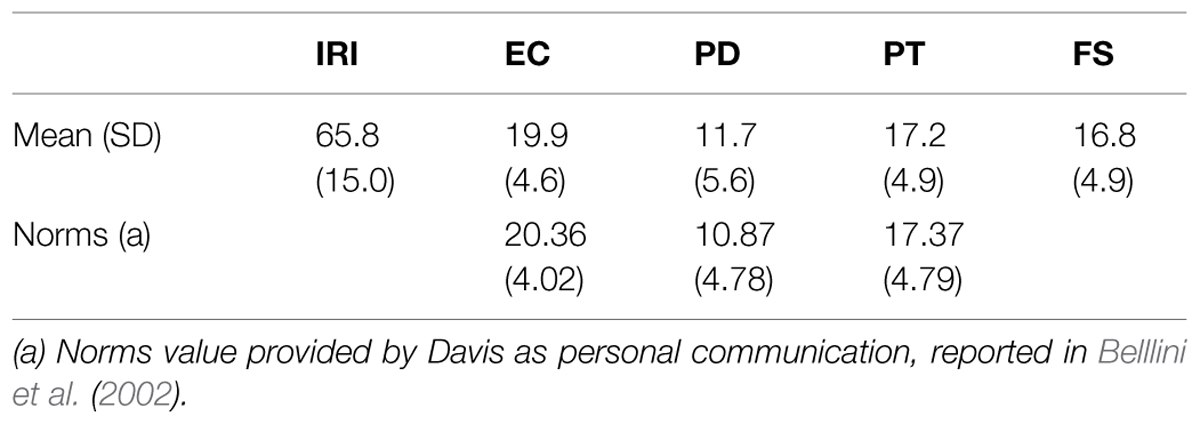
J Cogn Cult 10:309–326Įvers C, Fischer A, Rodriguez Mosquera P, Manstead A (2005) Anger and social appraisal: a “spicy” sex difference? Emotion 5:258–266 Westview Press, BoulderĬassels TG, Chan S, Chung W, Birch SA (2010) The role of culture in affective empathy: cultural and bicultural differences. J Autism Dev Disord 34:163–175ĭavis MH (1996) Empathy: a social psychological approach. An investigation of adults with Asperger syndrome or high functioning autism, and normal sex differences. J Pers Soc Psychol 44:113–126īaron-Cohen S, Wheelwright S (2004) The Empathy Quotient (EQ). Child Dev 53:413–425ĭavis MH (1983) Measuring individual differences in empathy: evidence for a multidimensional approach. J Consult Clin Psychol 33:307–316īryant B (1982) An index of empathy for children and adolescents. Hogan R (1969) Development of an empathy scale. In: Eisenberg N (ed) The development of prosocial behavior. Hoffman ML (1982) Development of prosocial motivation: Empathy and guilt. Jolliffe D, Farrington D (2004) Empathy and offending. Richardson DR, Hammock GS, Smith S, Gardner W, Signo M (1994) Empathy as a cognitive inhibitor of interpersonal aggression. Wiley, New York, pp 701–778Įisenberg N, Fabes RA, Miller PA, Fultz J, Mathy RM, Shell R, Reno R (1989) The relations of sympathy and personal distress to prosocial behavior: A multimethod study. In: Damon W, Eisenberg N (eds) Handbook of child psychology: social, emotional, and personality development, 5th edn. J Pers Soc Psychol 68:300–313Įisenberg N, Fabes RA (1998) Prosocial development. Dev Psychol 27:849–857īatson CD, Turk C, Shaw L, Klein T (1995) Information function of empathic emotion: learning that we value the other’s welfare. Psychol Bull 101:91–119Įisenberg N, Miller PA, Shell R, Mcnalley S, Shea C (1991) Prosocial development in adolescence: a longitudinal study. Psychol Bull 84:712–722Įisenberg N, Miller PA (1987) The relation of empathy to prosocial and related behaviors. Hoffman ML (1977) Sex differences in empathy and related behaviors. Mehrabian A, Epstein N (1972) A measure of emotional empathy.

Possible reasons for these results are also discussed.ĭavis MH (1980) A multidimensional approach to individual differences in empathy. Mainly two variables (Considerate Social Style and Impassiveness) were capable of distinguishing between men and women. The results convey that the proposed model is invariant between boys and girls, although the dimensions exhibited significant differences of magnitude as a function of sex. Second, it aims to determine which dimensions involved in empathy most strongly predict gender differences. First, it aims to determine, conceptually speaking, whether or not the model analyzed by this instrument is equivalent for the two sexes.


Attending to gender differences, the present study’s objective is twofold. The Interpersonal Reactivity Index (Davis in Catalog Sel Documents Psychol 10:1–19, 1980) is an instrument made up of four subscales, each measuring a different dimension of the global concept of empathy. Empathy is understood as a multidimensional construct involving both cognitive and emotional factors for which, traditionally, gender differences have been reported.


 0 kommentar(er)
0 kommentar(er)
